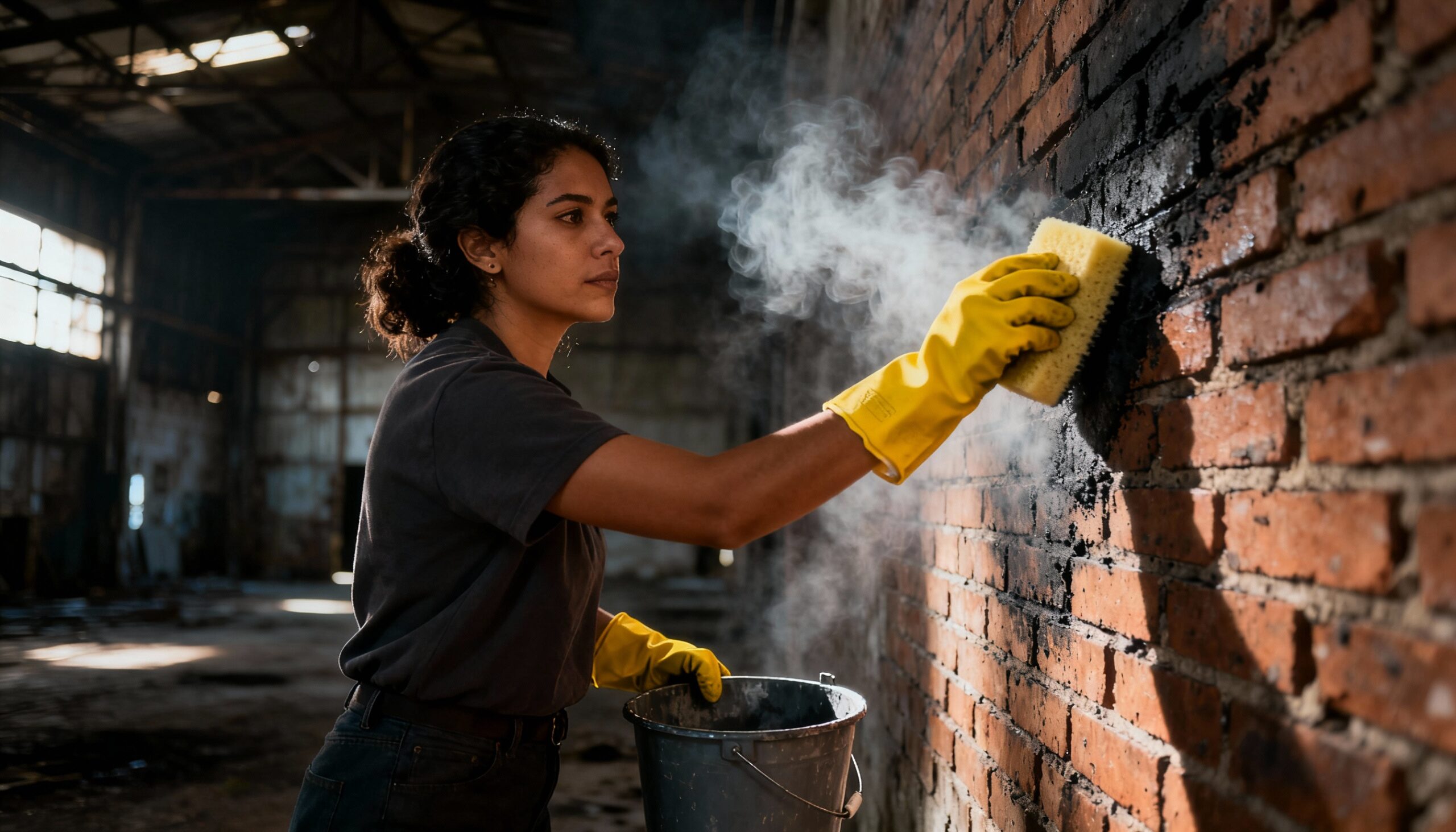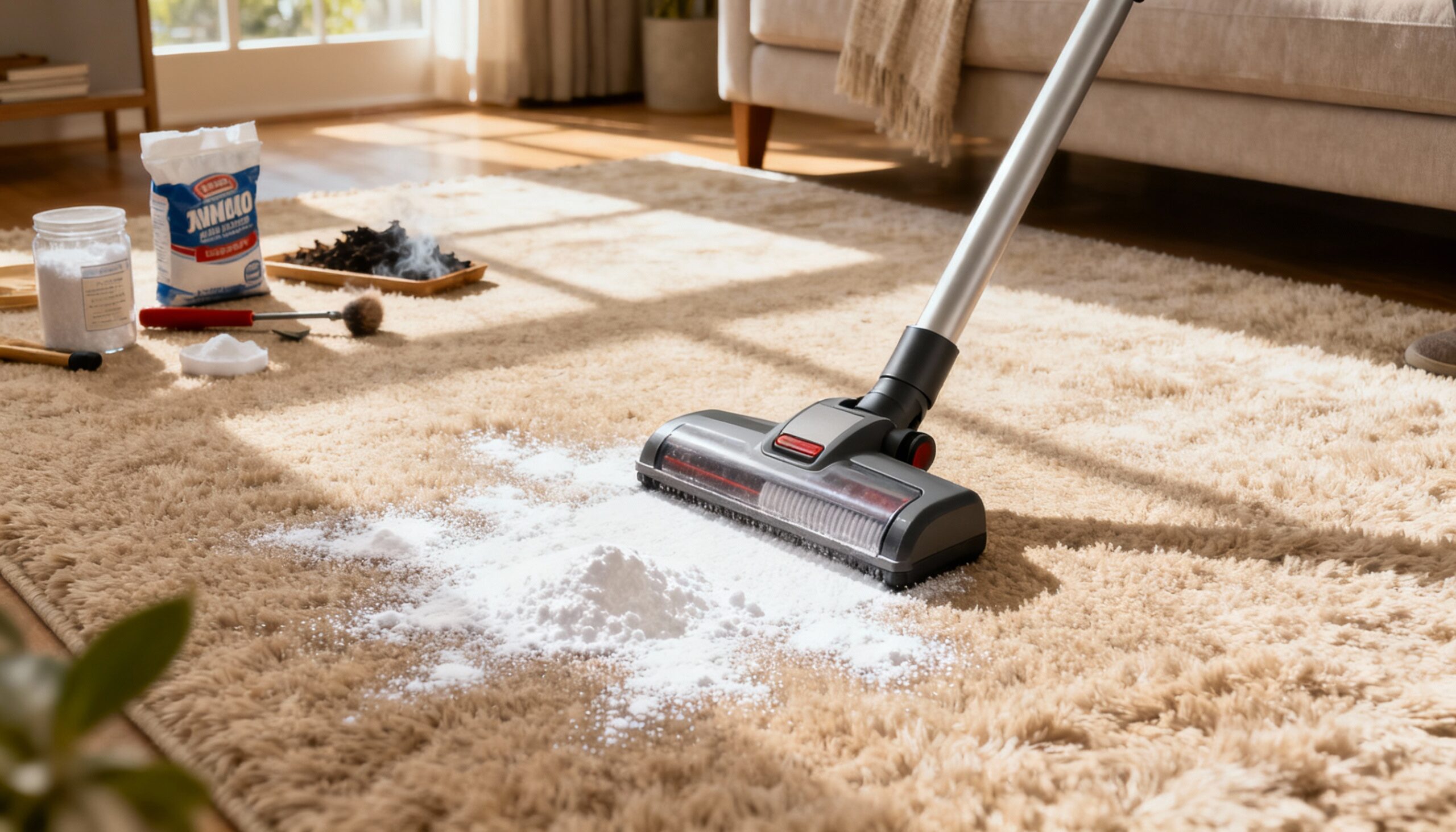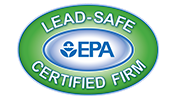What You’ll Need
Tools:
- HEPA vacuum cleaner (captures microscopic smoke particles)
- Steam cleaner or carpet shampooer
- Spray bottles (multiple for different solutions)
- Scrub brushes (soft and medium bristle)
- Bucket and mop
- Box fans or air circulators
- Ladder (for reaching walls and ceilings)
Materials:
- White vinegar (natural deodorizer and cleaner)
- Baking soda (odor absorber)
- Activated charcoal (available at pet stores or online)
- TSP (Trisodium Phosphate) or TSP substitute (hardware stores)
- Odor-blocking primer (if painting is needed)
- HEPA air filters
- Microfiber cloths
- Dish soap (degreasing formula)
- Trash bags (for disposing damaged items)
Time Required:
⏱️ Initial Ventilation: 24-48 hours
⏱️ Surface Cleaning: 4-8 hours (spread over multiple days)
⏱️ Deep Treatment: 3-5 days
⏱️ Air Quality Improvement: Ongoing (1-2 weeks)
⚠️ Safety First
Before you begin:
- ✅ Wear protective gear: N95 mask, gloves, and eye protection
- ✅ Ensure proper ventilation: Open all windows and doors
- ✅ Check for structural damage: Don’t proceed if walls, ceilings, or floors are compromised
- ✅ Test cleaning solutions: Try on inconspicuous areas first
- ✅ Watch for health symptoms: Headaches, breathing difficulty, or irritation means stop immediately
🔴 Do NOT attempt smoke odor removal if:
- There’s visible soot covering large areas
- You smell gas or see electrical damage
- The fire was caused by chemicals or hazardous materials
- Anyone in the household has respiratory conditions
- The smoke damage is throughout multiple rooms
Step-by-Step Smoke Odor Removal Process
Step 1: Immediate Ventilation and Air Circulation
Why it matters: Fresh air is your first defense against smoke particles. Opening your home immediately begins diluting airborne odor molecules and is the foundation of effective smoke odor removal.
- Open every window and door in affected areas to create cross-ventilation
- Position box fans facing outward in windows to push smoky air outside
- Turn on ceiling fans to circulate air throughout the space
- Run HVAC system with new HEPA filters installed (if fire department cleared it)
- Keep ventilating for at least 24-48 hours continuously
✅ Success indicator: The heavy smoke smell should noticeably diminish, though a residual odor will likely remain.
💡 Pro tip: Place box fans on one side of your home blowing in, and on the opposite side blowing out, to create a powerful air current that flushes out smoke particles more effectively.
Step 2: Remove and Clean Fabric Items
Why it matters: Fabrics are smoke magnets. They absorb and hold odor particles deep in their fibers, continuously releasing smell back into your home. Addressing fabrics is crucial for successful smoke odor removal.
- Remove all washable fabrics: curtains, bedding, cushion covers, towels, and clothing
- Wash items separately from regular laundry using hot water (check care labels first)
- Add 1 cup of white vinegar to the wash cycle along with detergent
- Air dry outside in direct sunlight when possible (UV rays help neutralize odors)
- Rewash if needed: Stubborn smoke odors may require 2-3 wash cycles
✅ Success indicator: Fabrics smell fresh with no smoky residue when you hold them close to your nose.
⚠️ Warning: Some heavily smoke-damaged fabrics may be permanently affected. If odor persists after three washes, consider professional contents cleaning and restoration or replacement.
Step 3: Vacuum All Surfaces Thoroughly
Why it matters: Smoke particles settle on every surface. Vacuuming with HEPA filtration removes these particles before they become airborne again, which is an essential part of thorough smoke odor removal.
- Use HEPA vacuum attachment on all upholstered furniture, including under cushions
- Vacuum carpets and rugs slowly in multiple directions
- Clean curtains and drapes while hanging (if not removable)
- Vacuum walls and ceilings using the brush attachment
- Don’t forget hidden areas: inside closets, under furniture, and behind appliances
✅ Success indicator: No visible dust or particles when running your hand across surfaces.
Step 4: Deep Clean Hard Surfaces
Why it matters: Smoke residue creates an invisible film on hard surfaces that continues emitting odor. This film must be physically removed through proper smoke odor removal cleaning techniques, not just masked.
For walls and ceilings:
- Mix cleaning solution: 1 gallon warm water + 1 tablespoon TSP (or substitute) + 1 cup white vinegar
- Work from top to bottom to prevent streaking
- Use two-bucket method: one for cleaning solution, one for rinsing
- Scrub in circular motions with a microfiber cloth or sponge
- Rinse with clean water and dry thoroughly
For floors:
- Sweep or vacuum first to remove loose particles
- Mop with vinegar solution: 1 cup vinegar per gallon of water
- Pay special attention to corners and baseboards where smoke accumulates
- Use appropriate cleaner for your floor type (wood, tile, laminate)
💡 Pro tip: If your fire involved water damage from firefighting efforts, you may also need professional water cleanup and extraction services to prevent mold growth.
✅ Success indicator: Cleaning cloths come away clean, not gray or brown with residue.
⚠️ Warning: Test TSP on a small, hidden area first—it can damage some paint finishes and strip wax from floors.

Step 5: Treat Carpets and Upholstery with Baking Soda
Why it matters: Baking soda naturally absorbs odors at the molecular level rather than just covering them up.
- Sprinkle generous layer of baking soda over all carpeted areas and upholstery
- Work it in gently with a brush to reach deep into fibers
- Leave for 24-48 hours (the longer, the better)
- Vacuum thoroughly using slow, overlapping passes
- Repeat if necessary for stubborn odors
✅ Success indicator: When you smell the carpet or furniture directly, the smoke odor is significantly reduced or eliminated.
💡 Pro tip: Add a few drops of essential oil to the baking soda before application for a pleasant scent boost (optional).

Step 6: Steam Clean Carpets and Furniture
Why it matters: Heat and moisture work together to lift embedded smoke particles that dry cleaning can’t reach. Steam cleaning is a highly effective smoke odor removal method for deep carpet and upholstery treatment.
- Rent or purchase a carpet steam cleaner (available at hardware stores)
- Use hot water extraction method with upholstery-safe cleaner
- Make multiple slow passes over each area
- Empty and refill tanks frequently—you’ll see how dirty the water becomes
- Allow 24 hours drying time with fans running
✅ Success indicator: The extracted water in the dirty tank is clear, not brown or gray.
Step 7: Neutralize Odors in HVAC System
Why it matters: Your HVAC system can circulate smoke particles throughout your home repeatedly if not properly cleaned. Addressing your ventilation system is critical for complete smoke odor removal.
- Replace all air filters with new HEPA-rated filters
- Vacuum accessible ductwork openings with brush attachment
- Wipe down vent covers with vinegar solution
- Consider professional duct cleaning for severe smoke exposure
- Run system continuously for several days with new filters
✅ Success indicator: Air coming from vents smells neutral with no smoke odor.
Step 8: Use Activated Charcoal and Odor Absorbers
Why it matters: Activated charcoal is one of nature’s most effective odor neutralizers for smoke odor removal, trapping odor molecules in its porous structure.
- Place bowls of activated charcoal in affected rooms (replace every 2-3 days)
- Position near odor sources: in closets, under sinks, near fabrics
- Add bowls of white vinegar in corners overnight (vinegar absorbs odors)
- Use commercial odor absorbers designed for smoke (follow product instructions)
- Keep air circulating to help absorbers work effectively
✅ Success indicator: The charcoal darkens in color and the overall room smell improves daily.
Step 9: Address Walls with Primer (If Needed)
Why it matters: Sometimes smoke odor penetrates porous surfaces like drywall. Odor-blocking primer seals these surfaces to prevent smell from leaching out.
- Assess if needed: Persistent smell after thorough cleaning indicates absorption into walls
- Choose odor-blocking primer: Look for products specifically designed for smoke damage
- Apply according to directions: Usually 1-2 coats required
- Ensure proper ventilation during application and drying
- Paint with your choice of color after primer dries completely
✅ Success indicator: No smoke smell emanates from walls even after several days.
⚠️ Warning: This is an intermediate to advanced step. Consider hiring professional painters for large areas or if you’re unfamiliar with painting techniques.
Step 10: Monitor and Maintain Air Quality
Why it matters: Continuing air quality management prevents residual odors from returning and ensures your smoke odor removal efforts have lasting results.
- Run air purifiers with activated carbon filters continuously for 1-2 weeks
- Replace HVAC filters again after 2 weeks, then monthly for 3 months
- Keep fresh air circulating by opening windows daily when weather permits
- Monitor for returning odors in humid conditions (humidity can reactivate smells)
- Maintain indoor plants that naturally filter air (optional enhancement)
✅ Success indicator: Your home maintains a fresh, neutral smell even with windows closed.
Troubleshooting Common Smoke Odor Removal Issues
| Problem | Possible Cause | Solution | When to Call Pro |
|---|---|---|---|
| Smell returns after cleaning | Odor trapped in porous materials or HVAC | Repeat baking soda treatment; check ductwork; seal walls with primer | If smell persists after two complete treatment cycles |
| Stronger smell when humid | Moisture reactivates trapped particles | Use dehumidifier; increase air circulation; apply additional odor neutralizers | If humidity reveals new areas of damage or mold growth occurs (see mold removal services) |
| Odor in one specific area | Concentrated smoke damage or hidden source | Focus deep cleaning on that zone; check inside walls, under floors, attic spaces | If you can’t locate source or suspect structural penetration |
| Cleaning makes smell worse | Disturbing settled particles without removing them | Increase ventilation; use HEPA vacuum before and after wet cleaning | If respiratory symptoms develop |
| Fabrics won’t release odor | Deep smoke penetration in fibers | Try enzymatic cleaner; sun-dry multiple times; add vinegar and baking soda to washes | Consider professional textile restoration or replacement |
🔴 When to Call a Professional
Stop DIY efforts and contact a fire restoration specialist if:
- Heavy soot coverage on walls, ceilings, or throughout multiple rooms
- Smoke smell persists after two complete treatment cycles (2+ weeks of effort)
- Health symptoms appear: persistent coughing, headaches, breathing difficulty, or eye irritation
- HVAC system affected: Smoke smell coming from vents or visible soot in ductwork
- Structural concerns: Staining, warping, or damage to building materials
- Insurance claim involved: Professional documentation may be required
- Fire involved synthetic materials: Plastic, rubber, or chemical fires require specialized treatment
- Returning residents with sensitivities: Children, elderly, or those with respiratory conditions
Professional smoke deodorization services have industrial equipment like thermal foggers, ozone generators, and hydroxyl generators that can eliminate odors DIY methods can’t reach. They also provide documentation for insurance claims and warranties on their work. For immediate assistance, our 24-hour emergency services are available whenever disaster strikes.
Preventive Tips for Future Protection and Smoke Odor Removal
- 🛡️ Install and maintain smoke detectors in every room and test monthly
- 🛡️ Keep fire extinguishers accessible and know how to use them
- 🛡️ Clean dryer vents regularly (major source of home fires)
- 🛡️ Maintain kitchen exhaust systems to prevent grease buildup
- 🛡️ Replace HVAC filters regularly to catch particles before they spread
- 🛡️ Create fire escape plan and practice it with household members
- 🛡️ Document belongings with photos for insurance purposes
Frequently Asked Questions
How long does it take to completely remove smoke odor from a home?
For mild smoke exposure, expect 1-2 weeks of active treatment and monitoring using DIY smoke odor removal methods. Moderate damage typically requires 2-4 weeks of comprehensive cleaning and odor remediation. Heavy smoke damage often needs professional smoke odor removal intervention and can take 4-8 weeks or more to fully eliminate odors. Success depends on damage severity, materials affected, and how quickly treatment begins after the fire.
Is it safe to stay in a home with smoke odor?
Mild smoke odor after proper ventilation is generally safe for healthy adults. However, pregnant women, children, elderly individuals, and those with respiratory conditions should avoid staying in a home with persistent smoke smell. If you experience headaches, coughing, or breathing difficulty, evacuate immediately and consult professionals. Smoke particles contain toxins that can cause health issues with prolonged exposure, making thorough smoke odor removal essential for safety.
Will painting over smoke damage eliminate the odor?
Regular paint alone won’t eliminate smoke odor—it will eventually bleed through. You must first thoroughly clean surfaces, then apply odor-blocking primer specifically designed for smoke damage before painting. Products containing shellac or specialized sealants prevent odor molecules from escaping. Skipping the primer step or failing to clean first will result in returning odors within weeks or months, wasting your time and money on ineffective fire smell elimination.
Can I use an ozone generator for smoke odor removal?
Ozone generators can be effective for smoke deodorization, but they’re potentially dangerous if used improperly. Ozone is toxic to humans and pets at treatment levels, requiring complete evacuation during use. They also don’t remove the source—just mask odors temporarily if surfaces haven’t been cleaned first. Professional restoration services use ozone generators safely as part of comprehensive treatment. For DIY homeowners, activated charcoal, HEPA filtration, and thorough cleaning are safer, more sustainable approaches.
What’s the biggest mistake people make with smoke odor removal?
The most common mistake is trying to mask odors with air fresheners or perfumes instead of removing the source. Smoke particles must be physically eliminated through cleaning—sprays only temporarily cover the smell. Another critical error is inadequate ventilation before cleaning, which just moves particles around. Rushing the process is also problematic; effective odor remediation requires patience and multiple treatment rounds. Taking shortcuts or stopping too soon almost always results in returning odors.









